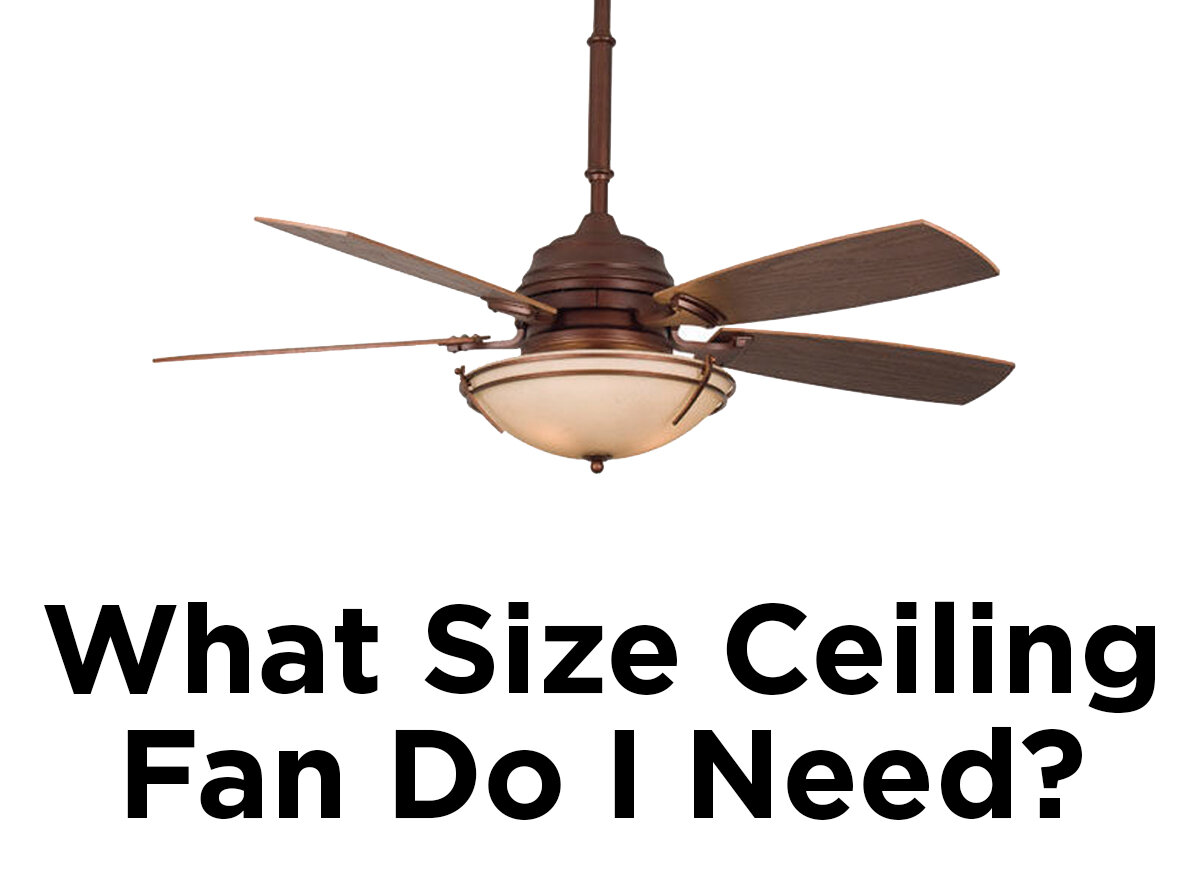What Size Ceiling Fan Do I Need?
Whether it’s a new build, remodel or replacement, there’s a great deal to consider when buying a new ceiling fan. While you could just buy and install any ceiling fan, you may find that you aren’t getting the best cooling power or the most energy efficient fan if you pick up the first one you see. Differences in motor type, size and number of blades, distance from the floor, and fan speed should all be considered before you purchase a new fan. Once you start paying attention to the technical side of ceiling fans, things can get somewhat overwhelming. Don’t worry; a little guidance will clear things up nicely.
Fan Size
The main reason you want a ceiling fan is for air circulation, so consider fan size first. Blade size and ceiling fan diameter are deciding factors on just how much air can be moved throughout a room (and whether or not your fan will fit inside the room). If you’re replacing your current fan, and were happy with the circulation it provided, just measure the diameter of the fan itself to find a suitable replacement.
There are two ways to measure diameter, depending on whether your fan has an even or odd number of blades.
Four Blades: from one blade tip to the opposite blade tip to get the diameter.
Three or Five Blades: measure from the tip of one blade to the center of the fan and double that distance.
If you don’t have the original fan, then consider the size of the room. Smaller rooms will use smaller fans. As an example: A laundry room will usually use a smaller fan with a diameter of 29 to 36 inches. Standard living areas like bedrooms and living rooms will need larger fans, a 44” ceiling fan will usually do the trick.
While we’re talking about blade size, it’s important to mention blade number. You’ve probably noticed that fans come with different numbers of blades. The most common are three to five blade fans, but you’ll find ceiling fans that sport a single blade and some that have as many as nine! As the blade number increases, the fan becomes quieter but moves less air. Four- and five-blade fans have become the standard because they are the best balance of air circulation and noise level. But if you want more air to circulate, and you don’t mind a little noise, use a three-blade fan. In the same way, if noise is an issue, use a five-blade fan.
Clearance
So you know that your fan will fit in the room, and that air circulation won’t be a problem. The next step is to check for clearance around the fan. When it comes to the average American, 5’ 10” is the upper bound limit of height. It is for this reason that a ceiling fan should be no lower than 7’ above the floor (and no higher than 9’ for circulation purposes). The 7’ clearance ensures safety for anyone standing beneath the fan while also keeping the fan close enough to the ground to provide proper air circulation. Ceiling height is usually adjusted by using a downrod to raise or lower the fan.
Keeping at least 8-10” inches of clearance between the fan blade and ceiling is also vital. This clearance protects the blades if they begin to wobble and, more importantly, allows for proper airflow above the fan. Having more space above the fan isn’t a problem, but be sure to keep this minimum distance if you can.
Don’t forget to leave clearance from the blades to walls and other fixtures. The recommended distance is to keep ceiling fans at least 18” away from walls and 39” from other ceiling fixtures. Maintaining proper distance protects your fan blades (as well as the other objects in the room) and allows for proper air movement throughout the room. This should include considerations for sloped ceilings, where a downrod is necessary to prevent fan blades from hitting the ceiling.
Mounting
Ceiling fans come with many different mounting options. The most common are:
Standard: Typically a base with a 3-5 inch downrod.
Extended: Designed for tall ceilings using a downrod between 6 and 120 inches.
Flush Mount: Useful for very low ceilings, flush mounts do not use a downrod. Flush mount fans are anchored directly to the ceiling instead. These “hugger” fans are low profile and do not move as much air as traditional fans.
Sloped Mounts: Used on angled or vaulted ceilings.
Ceiling fans require a lot of clearance, not just for safety, but also to maximize airflow around the room. Now that you know what to look for, setting up a new fan will be easy. Be sure to check Part 2, where we discuss different fan styles such as light kits and energy efficient fans. If you have any additional comments, feel free to post them below, or contact us through Facebook, Twitter, LinkedIn, Pinterest, or Instagram!







